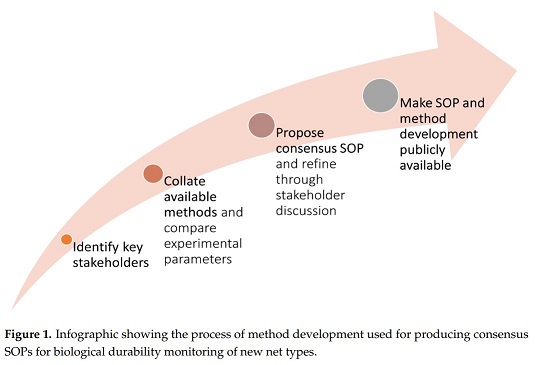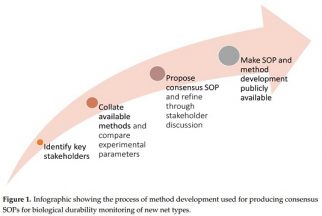All
Latest News
Publications
Experts publish updated protocols for assessing the durability of ITNs containing second active ingredients to fight insecticide resistance

New protocols have been published following a consultation to refine the way to assess the durability of dual active ingredient bednets.
The development of novel insecticide-treated nets (ITNs) has become pivotal to fight insecticide resistance in mosquitoes. In recent years, the World Health Organization (WHO) granted the prequalification status to several dual active ingredients (AI) ITNs. These new nets have been designed to kill pyrethroid-resistant mosquitoes by adding a second active ingredient to the fabric which already contains a pyrethroid. For example, the Interceptor G2 (IG2) nets contain the pro-insecticide chlorfenapyr. Other nets, such as the PermaNet 3.0 and the Olyset Plus, use the synergist piperonyl butoxide (PBO). The Royal Guard net, on the other hand, contains the insect growth regulator pyriproxyfen (PPF).
Randomized controlled trials (RCTs) and pilot deployment schemes are currently deploying these new nets to test their efficacy. During these studies, the durability of the nets (i.e. how long they effectively kill mosquitoes) is assessed by collecting net samples over time. These samples are then tested in bioassays using both insecticide-susceptible and resistant mosquitoes. However, the existing bioassays were developed to measure the durability of pyrethroid-only nets, and need adaptions and validation to measure the durability of nets containing secondary active ingredients. There is therefore a need to optimize these standard operating procedures (SOPs) further and reach an agreement on how to perform and interpret bioassays for assessing the nets’ durability. In particular, bioassay endpoints should be capable of detecting changes in the active ingredient bioefficacy over time (sensitive) but at the same time easy to measure (practical).
Following a recent consultation of relevant stakeholders, of university researchers, research organisations involved in ITNs durability monitoring studies, and procurement bodies, a new proposed set of guidelines and SOPs for assessing the durability of several dual-AI ITNs was agreed. The work is now published in the special issue on insecticides for mosquito control in the journal Insects. The publication focuses on the methods used to develop this set of optimized SOPs, which assess the bioefficacy of nets containing a pyrethroid plus either chlorfenapyr, PBO or PPF. The methods and SOPs have been discussed and agreed with all the relevant stakeholders.
Dr. Natalie Lissenden, a postdoctoral scientist in the Vector Biology department at LSTM and lead author for the paper, stated: “This was an iterative process which drew on the collective practical knowledge of researchers who have experience testing these products in the lab and field. Developing durability SOPs is a careful and balancing act between what data can feasibly be collected, what is needed for procurement decisions, and what would be valuable for future product development. The next steps of this process will be to formally validate these SOPs using data generated from ongoing field studies. ”
Access to the publication can be obtained at: https://www.mdpi.com/2075-4450/13/1/7
